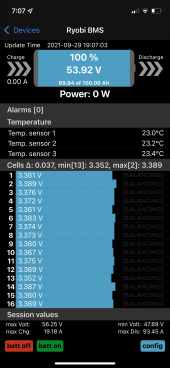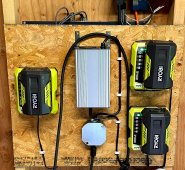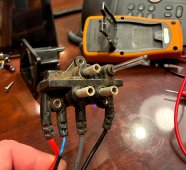Any decent lead-acid charger will alter voltage according to temperature. Even car alternators have a temperature-compensating regulator, although it measures ambient not battery temperature.
While the charger is in CV mode (may need to be connected to lead-acid because BMS of lithium would disconnect), you could twiddle a potentiometer, observe voltage change. Or start with your fixed resistor, measure voltage. After testing the sensor at a couple other temperatures and seeing its resistance, you could determine the NTC thermistor characteristics (what it probably is). Plug in a different fixed resistor and observe voltage change. Compare to published temperature compensation for batteries.
Also page 19 of my manual, "0.004V/degree C per cell or 0.024V for 12V battery"
To drop yours from 4.2V to 3.645V/cell would take simulated 92.5 degree increase, from 25C to 117.5 degrees C.
The charge controller ought to say, "That's too hot, I quit!", but worth a try, it's just a resistor value.
Higher indicated temperature is lower resistance. You already know that open circuit (infinite resistance) disables charger. Don't know about reduced resistance.
Shouldn't charge to excessive voltage every time and rely on BMS to disconnect. That is supposed to be a last line of protection; for less chance of failure you want two mechanisms to limit over-voltage. The charge controller is likely a switching power supply, and sudden disconnect could cause it to experience a voltage spike. Even if it survives a few times, could be causing damage.
Batteries have caught fire and burned the structure they were in, so consider charging it outside.
If you can't fool the battery charger or get it reprogrammed, consider one that does allow lithium settings. Victron or Midnight SCC used with PV panels, for instance. Or an inverter/charger. That would let you run tools too. If it wants to know and manage SoC, a shunt could let it keep track of power drawn by the mower.
Your AGM bank together with battery charger could get a new life as an on-line UPS. Or the individual batteries could be carried in the trunk for jumpstarting yourself.







